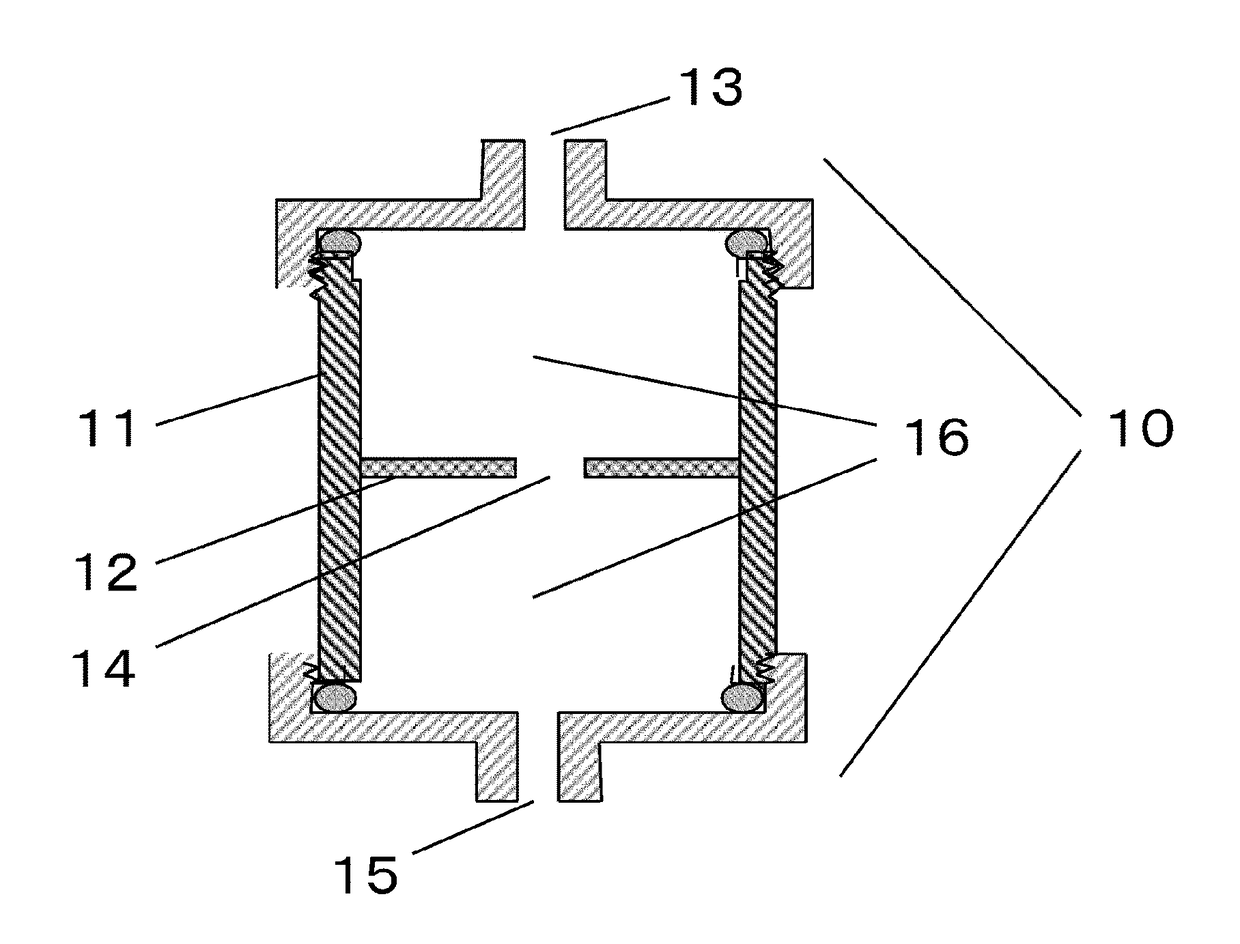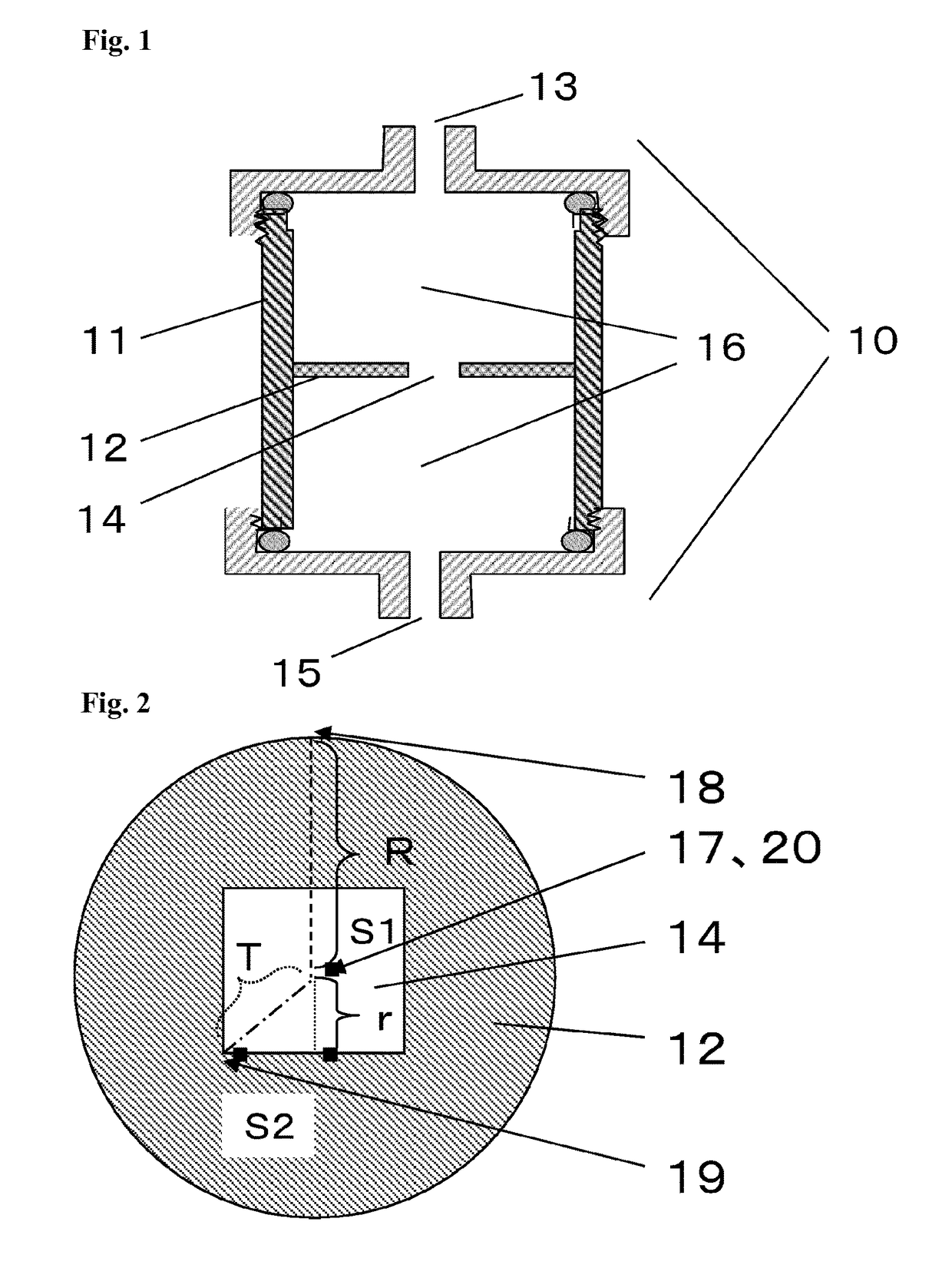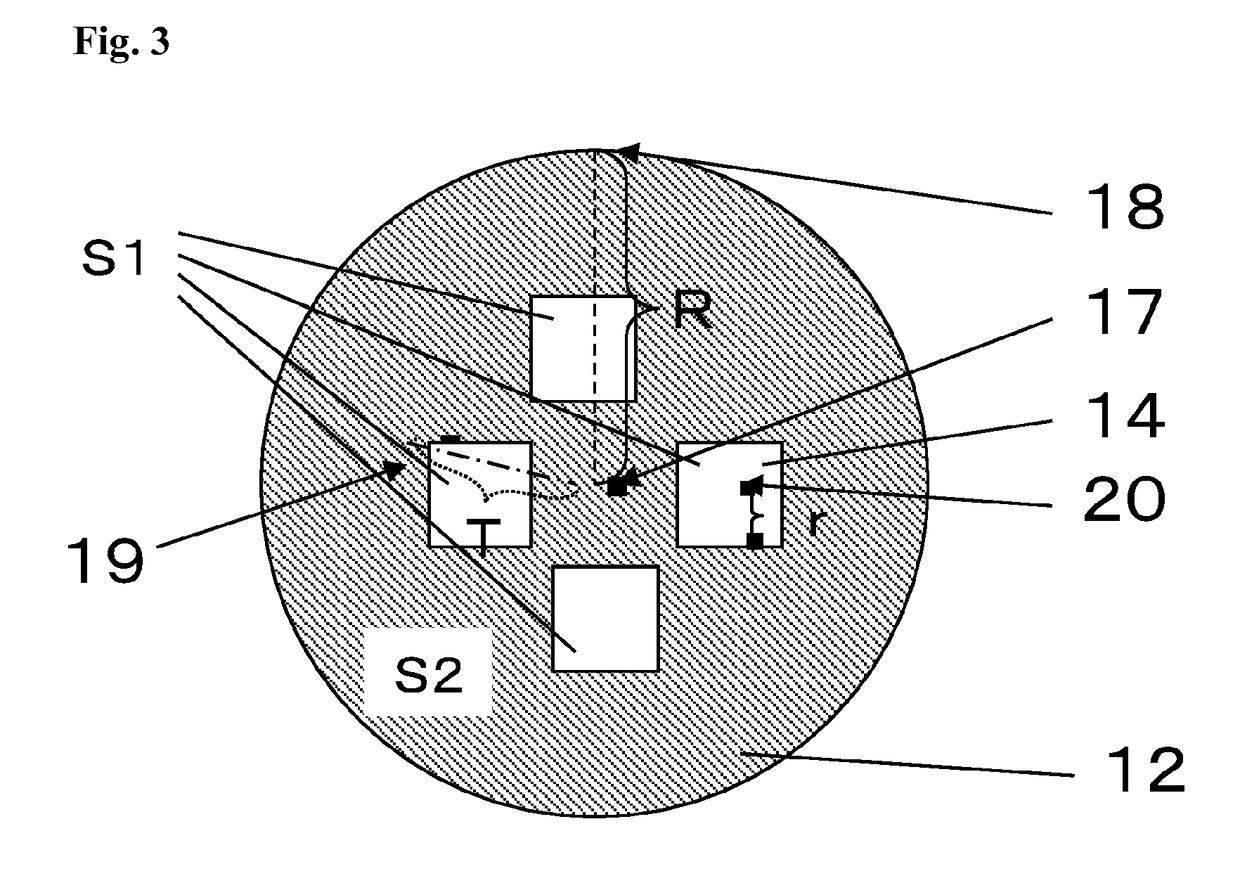Nucleated-cell capturing filter and nucleated-cell preparation method using same
a nucleated cell and capturing filter technology, applied in the field of cell separation filters, can solve the problems of reducing the therapeutic effect, requiring complicated operations, and large physical impact of the method on the cell, and achieves the effects of extending the time of contact, reducing the risk of cell leakage, and slowing down the flow ra
- Summary
- Abstract
- Description
- Claims
- Application Information
AI Technical Summary
Benefits of technology
Problems solved by technology
Method used
Image
Examples
example 1
[0094]A container with a height (inner dimension) of 16 mm, a radius (R) of 9 mm, and a cross-sectional area (S2) of a filter of 254 mm2 was used. The space of the container was equally separated into two rooms by a partition provided with one 3-mm-diameter opening (the shortest distance (r) from the center of the opening to the edge of the opening was 1.5 mm) at the center (the container has an area (S1) of the opening of 7.1 mm2 and a distance (T) from the center to the farthest point of the opening from the center of the cross section of 1.5 mm, which was the same as the (r)). Each of the two rooms was filled with 16 pieces of nylon 6 non-woven fabrics (air permeability: 40 mL / cm2 / sec, thickness: 0.30 mm, fiber diameter: 16.0 μm) laminated therein. Thus, a cell separation filter was prepared.
[0095]Next, a 50-mL syringe was filled with 45 mL of physiological saline as a priming solution. The syringe was connected to the inlet of the filter through a female lock connector. The phys...
example 2
[0100]A container with a height (inner dimension) of 14 mm, a radius (R) of 9 mm, and a cross-sectional area (S2) of a filter of 254 me was used. The space of the container was equally separated into two rooms by a partition provided with one 2-mm square opening (r=1 mm) at the center (S1=4 mm2, T=1.4 mm). The same procedures as in Example 1 were performed using the container, except that the number of individuals of swines n=1. The time from the start of allowing the priming solution to flow to the completion of the recovery of the nucleated cells by allowing a recovery solution to flow was 40 minutes. The mononuclear cell recovery yield, granulocyte recovery yield, and mononuclear cell recovery ratio per 20 ml of the resulting mononuclear cells were calculated. The results are shown in Table 1.
example 3
[0101]A container with a height (inner dimension) of 14 mm, a radius (R) of 9 mm, and a cross-sectional area (S2) of a filter of 254 mm2 was used. The space of the container was equally separated into two rooms by a partition provided with one 6-mm square opening (r=3 mm) at the center (S1=36 mm2, T=4.2 mm). The same procedures as in Example 1 were performed using the container, except that the number n of individuals of swines=1. The time from the start of allowing the priming solution to flow to the completion of the recovery of the nucleated cells by allowing a recovery solution to flow was 40 minutes. The mononuclear cell recovery yield, granulocyte recovery yield, and mononuclear cell recovery ratio per 20 ml of the resulting mononuclear cells were calculated. The results are shown in Table 1.
PUM
| Property | Measurement | Unit |
|---|---|---|
| octanol-water partition coefficient | aaaaa | aaaaa |
| pressure | aaaaa | aaaaa |
| flow rate | aaaaa | aaaaa |
Abstract
Description
Claims
Application Information
 Login to View More
Login to View More - R&D
- Intellectual Property
- Life Sciences
- Materials
- Tech Scout
- Unparalleled Data Quality
- Higher Quality Content
- 60% Fewer Hallucinations
Browse by: Latest US Patents, China's latest patents, Technical Efficacy Thesaurus, Application Domain, Technology Topic, Popular Technical Reports.
© 2025 PatSnap. All rights reserved.Legal|Privacy policy|Modern Slavery Act Transparency Statement|Sitemap|About US| Contact US: help@patsnap.com



